wimdelvoye, #abudhabi – 2012 (via http://instagram.com/p/u3eV4TQS5J/)
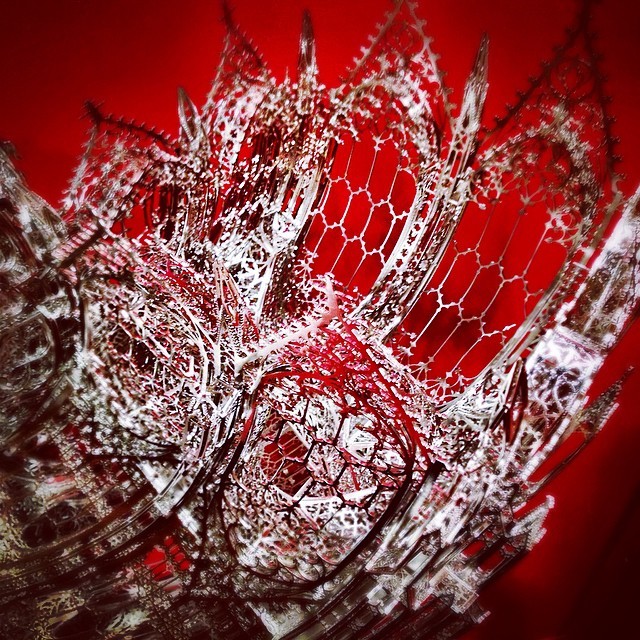
#wimdelvoye, #abudhabi - 2012 (via http://instagram.com/p/u3eV4TQS5J/)

#wimdelvoye, #abudhabi - 2012 (via http://instagram.com/p/u3eV4TQS5J/)



1414758045662 by cs_smith (via http://flic.kr/p/pTPUuv )

thE modERNs by paolobarzman (via http://flic.kr/p/pBAZNc )
“There is so much writing on the wall about climate change we’ve run out of walls and we’re just scribbling in blood on the floor now.”
– Eleanor Saitta

L1015502 (via http://flic.kr/p/pBqGbX )

L1015494 (via http://flic.kr/p/pBqEVF )

L1015489 (via http://flic.kr/p/pRGb2b )

L1015483 (via http://flic.kr/p/pTW1oE )

This near-infrared, color view from Cassini shows the sun glinting off of Titan’s north polar seas. (NASA/JPL-Caltech/University of Arizona/University of Idaho)
“Looking back from twentieth-century text-generating experiments to Llull and the I Ching, it is important to recognize that, as Peterson (1983) reminds us, When computer programmers and a few poets first produced machine poems based on much the same principle as that of Tristan Tzara … they did not see themselves as the odious speculators in Swift’s Academy of Lagado, nor as poets in the Dada tradition. Mostly, they were light-hearted experimenters, trying to discover the word-manipulation possibilities of a new machine. (137)”
–Montfort, Nick.Twisty Little Passages: An Approach to Interactive Fiction. Cambridge, MA: The MIT Press, 2003. (viacarvalhais)



sphaerae by _foam (via http://flic.kr/p/pNMfGG )

Bandhagens centrum- Stockholm Sweden. by WorldOfEcco (via http://flic.kr/p/oDUTMY )

Laurent SEGRETIER | Photography

this morning sky / (via http://instagram.com/p/uyiJD6xEUH/)

“I want to stay as close to the edge as I can without going over. Out on the edge you see all kinds of things you can’t see from the center”
Here we show that error-corrected quantum memories installed in cargo containers and carried by ship could provide a flexible and scalable connection between local networks, enabling low-latency, high-fidelity quantum communication across global distances. With recent demonstrations of quantum technology with sufficient fidelity to enable topological error correction, implementation of the necessary quantum memories is within reach, and effective bandwidth will increase with improvements in fabrication. Thus, our architecture provides a new approach to quantum networking that avoids many of the technological requirements of undersea quantum repeaters, providing an alternate path to a worldwide Quantum Internet.
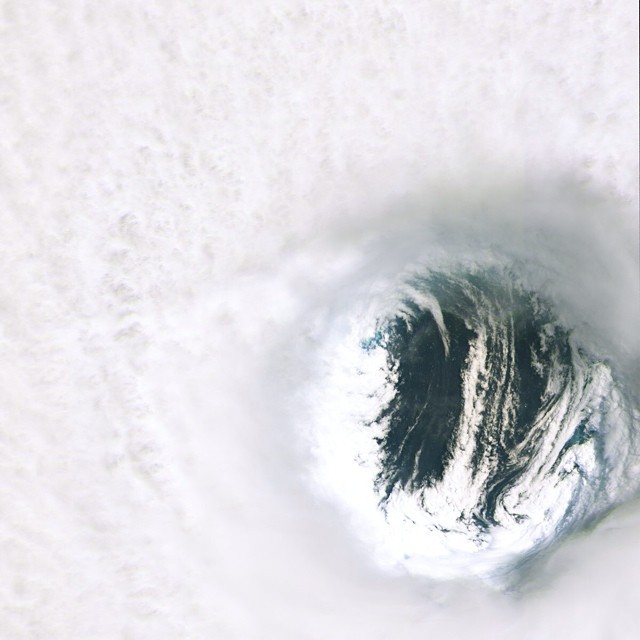
At about 11 a.m. local time today, supertyphoon Rammasun was in the South China Sea not far from Hong Kong. Landsat 8 took this image of its eye as it was traveling west-northwest, toward Hainan and mainland China. In the eyewall – the windiest area, surrounding the relatively calm eye – there were gusts of about 250 km/h (150 mph). The eye itself is about 40 km (25 mi) across in this image, and huge wind-driven waves are just visible under its swirling low clouds. Rammasun has already passed over the Philippines, doing significant damage, and is now forecast to head inland along the China/Vietnam border. (via http://instagram.com/p/qmoV4sTeSD/)
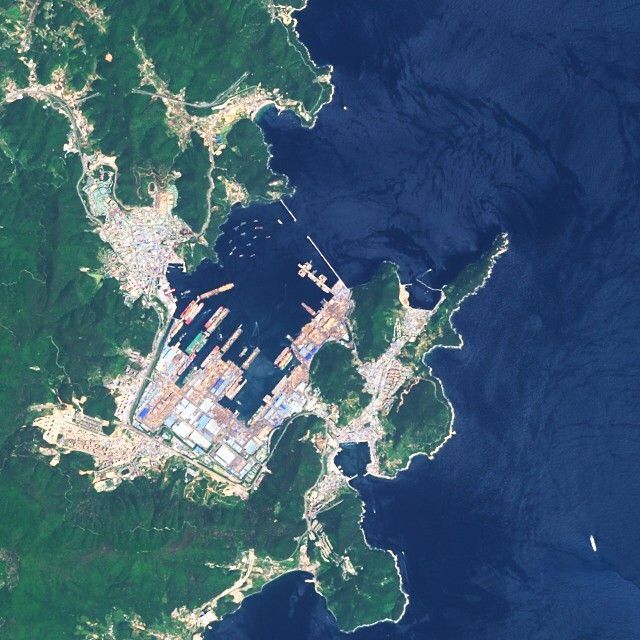
The largest ships in the world are built on Geoje Island, South Korea. This May, Landsat 8 had a clear view of Daewoo Shipbuilding & Marine Engineering, better known as DSME. It’s one of three world-class shipyards in the country. One of the others, Samsung Heavy Industries, is a 40-minute bus ride away on the other side of the island. DSME has the contract to build the Maersk Triple-E ships, which are 400 m (a quarter of a mile) long and can carry more than 18,000 standard shipping containers. When empty, they weigh as much as the Titanic did fully loaded. Even their propellers are so large that the metal takes a week to cool after casting. Their size allows them to be more efficient and more environmentally friendly than typical cargo ships. Three are visible at docks here, with their sterns (back sections) painted red. This image is about 9 km (6 mi) on each side. (via http://instagram.com/p/ugl_21TeRY/)
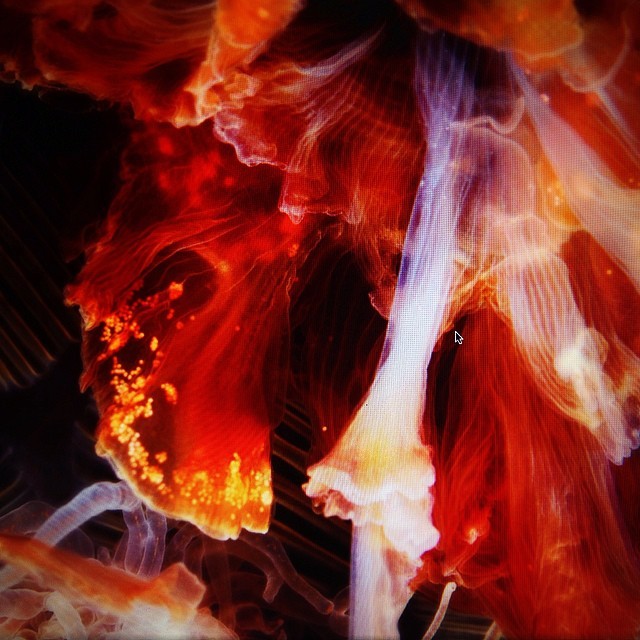
2013, working on the last issue - 007 - of my magazine - that never came out - #treasurearchives (via http://instagram.com/p/uv7pk0QS7S/)
This map offers an alternative way to browse the 2,619,833 images contained in the Internet Archive’s book collection. It shows 5500 different subjects which have been algorithmically arranged by their thematic relationships. The size of each link resembles the amount of images that are available for that topic. Clicking on a link will open the flickr page containing all the pictures for that subject.
http://incubator.quasimondo.com/internetarchive/InternetArchiveBookSubjectsMap.html

Pemandangan pagi hari Tukad Abu (via http://instagram.com/p/uuIM0Wo6m9/)

The Molenbeek Data Shadow as of 2014-10-28 (or the geolocation of Mozilla sympathizers around Brussels)


Planet of the Vampires #lightjerkx #longexposure (via http://instagram.com/p/us0wBKjL9F/)
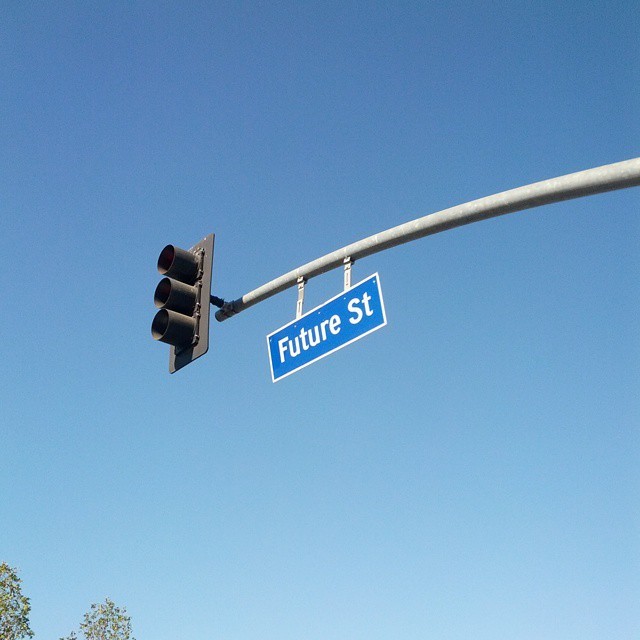
Cruising w. @plugimi (via http://instagram.com/p/utDS8fKBcw/)
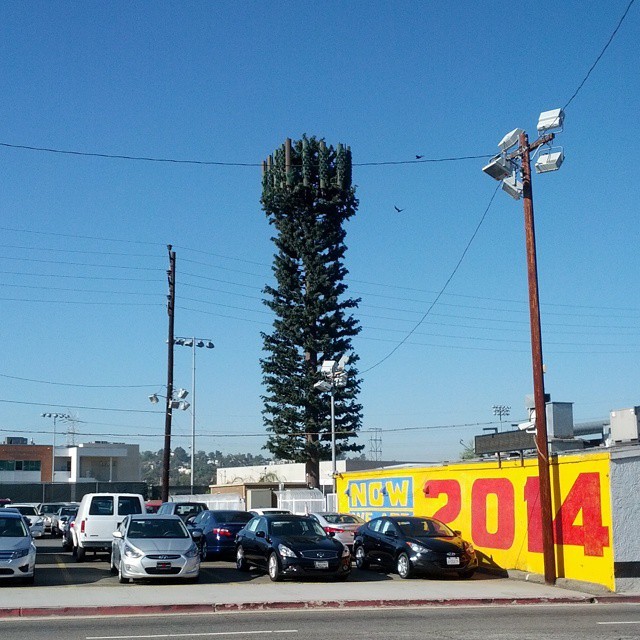

East river - 2014 (via http://instagram.com/p/utQmqAojXo/)

20141028 (via http://flic.kr/p/pyJhcj )

20141027 (via http://flic.kr/p/pyGe1v )

20141026 (via http://flic.kr/p/oUgNDY )

20141025 (via http://flic.kr/p/pyGbSc )

20141024 (via http://flic.kr/p/pR8hSF )

Jeremiah 19:9

DYE-2 by skandros (via http://flic.kr/p/ca8mt5 )

Dye-2 Radar Dome by skandros (via http://flic.kr/p/f6d9aU )

Greenland DYE-2 Distant Early Warning Site 1964 by “SnapDecisions” photography (via http://flic.kr/p/bJqRAv )

Arctic sea ice varied by NASA Goddard Photo and Video (via http://flic.kr/p/cZK195 )

Hubble Helps Find Smallest Known Galaxy Containing a Supermassive Black Hole by NASA Goddard Photo and Video (via http://flic.kr/p/oYWdhp )

Operation IceBridge Turns Five by NASA Goddard Photo and Video (via http://flic.kr/p/ppC5pB )

tHe mOdernS by paolobarzman (via http://flic.kr/p/pxehAh )

by (x)99. (via http://flic.kr/p/pQagGx )
Reincarnation is a phenomenon which should take place either through the voluntary choice of the concerned person or at least on the strength of his or her karma, merit and prayers. Therefore, the person who reincarnates has sole legitimate authority over where and how he or she takes rebirth and how that reincarnation is to be recognized. It is a reality that no one else can force the person concerned, or manipulate him or her. It is particularly inappropriate for Chinese communists, who explicitly reject even the idea of past and future lives, let alone the concept of reincarnate Tulkus, to meddle in the system of reincarnation and especially the reincarnations of the Dalai Lamas and Panchen Lamas […] Bear in mind that, apart from the reincarnation recognized through such legitimate methods, no recognition or acceptance should be given to a candidate chosen for political ends by anyone, including those in the People’s Republic of China.

prêtresse de Vesta by f w. (via http://flic.kr/p/p7iD3c )

The Mind Melding of Leo and Pipo by _JZ_ (via http://flic.kr/p/hiH8pH )

C.O.P.Y, Martin Wecke (2013)
The pages of C.O.P.Y remain empty for the human eye. After xeroxing or scanning, thanks to the ‘void pantograph’ method, the book reveals the essay “Copyright, Copyleft and the Creative Anti-Commons” by Anna Nimus. As in open source development, the text’s quality (legibility) gets better with every copy.
(via p-dpa)

Chesapeake Grain Elevator by Filth City (via http://flic.kr/p/bSp9RM )
“What is the difference between these words before and after they are published? Is publishing a tangible moment? Can you point to the instance when words pass from being unpublished to published? What is publishing anyway?”
–The Content Machine, Michael Bhaskar (2013)
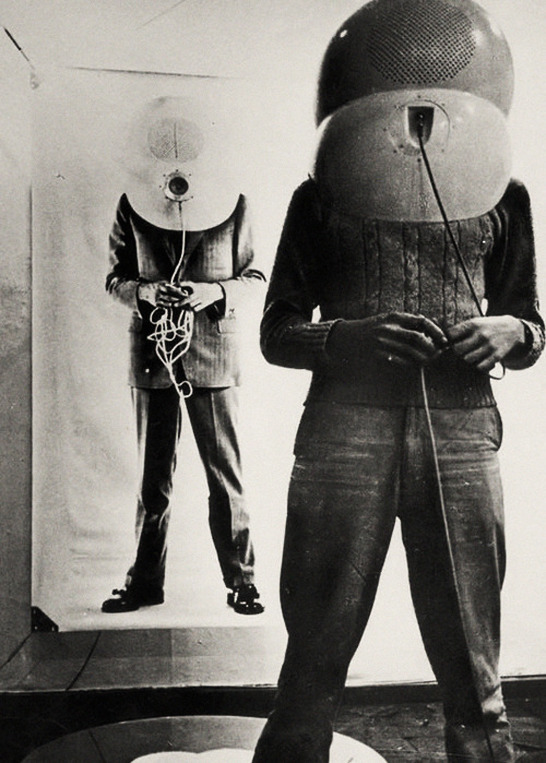
TV Helmet. (The Portable Living Room) by Walter Pichler, 1967.
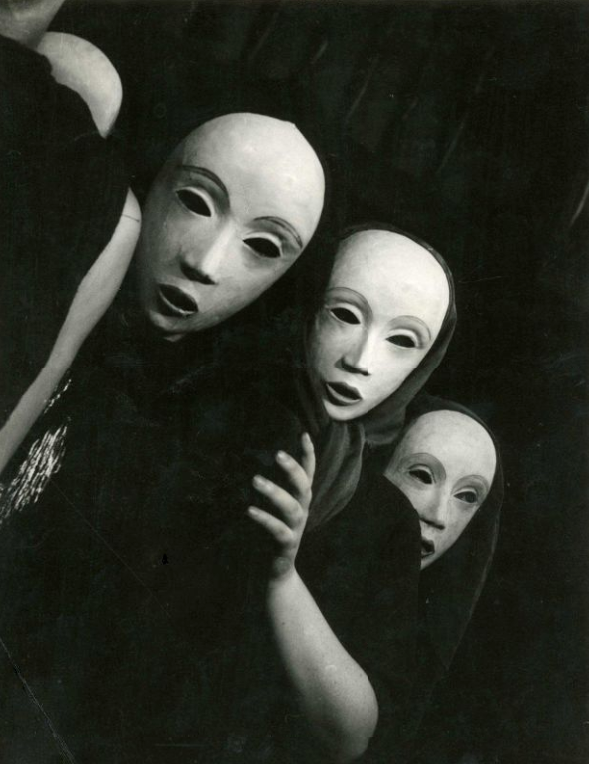
Yvonne Chevalier, Masques, c.1935
from Millon-Drouot


0909; ghosts ii

Aquarium (Space Metrics Diagram) by Alda Çapi Black
Harvard GSD Thesis 2011

leslie shows | black iceberg no.1

20141023 (via http://flic.kr/p/pNeYAR )

20141022 (via http://flic.kr/p/pw2FzU )

kodak, atlanta 2014
When I am very frightened, I look out the window on airplanes and say very quietly: I have seen the tops of clouds And I have. In all the history of humanity, I am one of the few that has seen the tops of clouds. Many would have died to do so, and some did. I have seen them many times. I have seen the Earth from space, and spun it around like a god to see what’s on the other side. We are the only consciousness we’ve ever found that has looked deep into the infinite dark, and instead of dark, we saw galaxies. Galaxies! Suns and worlds beyond number. We have looked into our world and found atoms, atomic forces, systems that dance to the glorious music of the universe. We have seen actual wonders that verge on the ineffable. We have coined a word for the ineffable. We have coined thousands of words for the ineffable. In our pain we find a kind of magic, in our worst and meanest specimens we find the flesh of a common human story.
https://medium.com/message/i-have-seen-the-tops-of-clouds-e21c5941de32

image by .George_Nikolopoulos (via http://flic.kr/p/pv2awL )

_8B07014 360ppi shadows by mingthein (via http://flic.kr/p/pKwcbm )

Mumbai, India by europeanspaceagency (via http://flic.kr/p/pvmPjP )

gusto8 by brucesflickr (via http://flic.kr/p/pvkoEx )

“experimenting and creating a new multi-facet identity for the city of Brussels, seems like an evident choice, not only because it is the capital of Europe, but also because Belgium has always been considered as the laboratory of the European Union in terms of cultural cohabitation.”
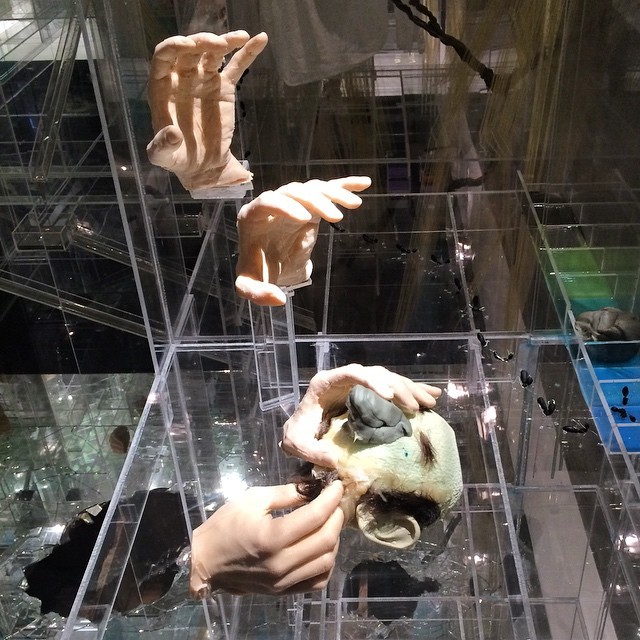
Make Melon Head ☝️🍈 #DavidAltmejd #Flux at Musée d'Art Moderne in Paris 🏃 15 min by foot from #FIAC #fiac2014 (via http://instagram.com/p/uf6r95wmgx/)

Iceland - 2013 (via http://instagram.com/p/ugTiaAojUX/)

“In civilizations without boats, dreams dry up, espionage takes the place of adventure, and the police take the place of pirates.”
– Michel Foucault,Of Other Spaces

moss monsters (3 of 4) by manyfires (via http://flic.kr/p/fcwXRb )
Dark Ecology appears as an aesthetic concern, as a way of shaping or focusing thought, a method of holding contradictions open and unresolved without falling into paralysis, a tuning fork that resonates in particular soundfields, as extra layers of clothing to protect against ‘the elements’, reinforced, yet permeable boundaries between the human organism and the environment (habitat/habitus).

Edgerton, Harold (1903-1990) - 1962 Detail of Veins in Human Eyeball by RasMarley (via http://flic.kr/p/dJq2WV )
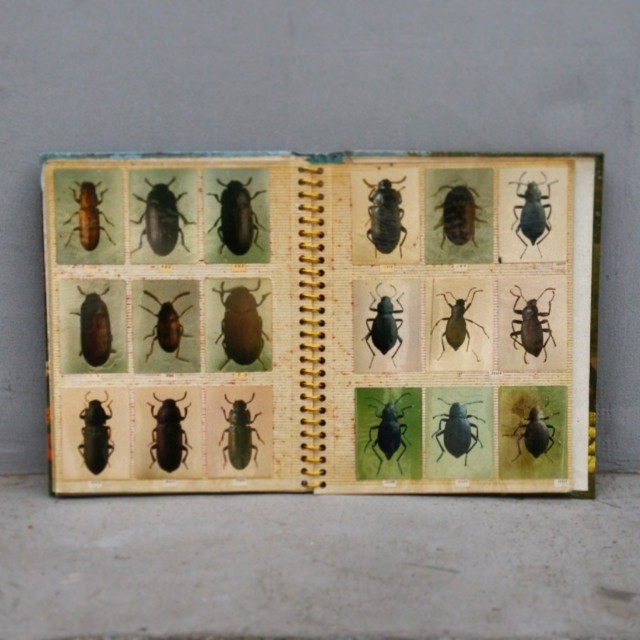

by a freedom craver’s diary (via http://flic.kr/p/hRRykY )

by a freedom craver’s diary (via http://flic.kr/p/iC64by )

by a freedom craver’s diary (via http://flic.kr/p/iK1vUF )

by a freedom craver’s diary (via http://flic.kr/p/o2obJ1 )

carrara-marble-fron-art-history-to-toothpaste-the-environmental-disaster by Cea. (via http://flic.kr/p/ptDnhh )

IMG_1241 by jimbonzo079 (via http://flic.kr/p/pE3qRc )

IMG_4875-IMG_4879-IMG_4880-IMG_4881 by jimbonzo079 (via http://flic.kr/p/pnWGjZ )

Lunch is ready by Alksnyte (via http://flic.kr/p/oNVN6d )

cf1(12) by Emma McNally1 (via http://flic.kr/p/ptv6Fe )

cf5(7) by Emma McNally1 (via http://flic.kr/p/ptzfeg )
“…but what people will really want to do with these things is make worlds as strange as we can stand”

20141021 (via http://flic.kr/p/oPeH6C )

20141020 (via http://flic.kr/p/pHZKv9 )

20141019 (via http://flic.kr/p/ptADVV )

“We make our journeys out there in the low light of the future, and return to the bourgeois day and its mass delusion of safety, to report on what we’ve seen.”
–Thomas Pynchon, Against the Day
“What are any of these‘utopian dreams’ of ours but defective forms of time-travel?”
–Thomas Pynchon, Against the Day
This is the richest and wildest park in Bucharest – but this wasn’t supposed to happen at all. Under communism, the plan was for Vacaresti to be filled with water; in the idiotic capitalist years of the mid-2000s, it was meant to be a concert venue. Both projects collapsed – and the zone became a metaphor for the failures of Romania’s development under both communist and free market principles. Yet its teeming wildlife, lawless beauty and inhabitants of drifters, scraping a living by harvesting the wild, lay the foundations for how this troubled country could prosper.
http://www.citymetric.com/skylines/hole-bucharest-s-become-nature-reserve–398

Lucid Peninsula // OrganoClean by Times Up Linz (via http://flic.kr/p/poqDBM )

Lucid Peninsula // Future Fabulators by Times Up Linz (via http://flic.kr/p/poqsoz )
“Metallosphaera prunae, isolated from a smoldering heap on a uranium mine in Thüringen, Germany, could be viewed as a “spontaneous mutant” of Metallosphaera sedula, an isolate from Pisciarelli Solfatara near Naples. Metallosphaera prunae tolerated triuranium octaoxide (U3O8) and soluble uranium [U(VI)] to a much greater extent than M. sedula. Within 15 min following exposure to “U(VI) shock,” M. sedula, and not M. prunae, exhibited transcriptomic features associated with severe stress response.”

Maison Souza (Pt) by Martino Zegwaard (via http://flic.kr/p/prAFCe )
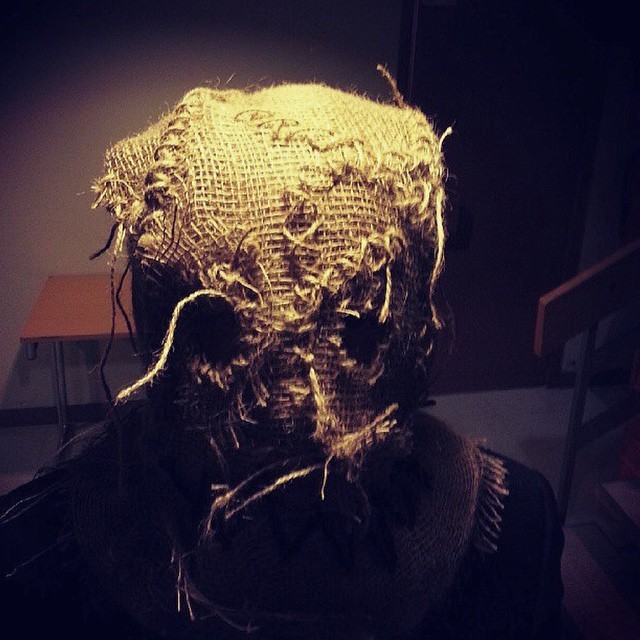
Masked Maaths. had a blast last night at the masquerade! (via http://instagram.com/p/tf4nwZv6hF/)

IMG_3671.jpg by Loop.pH (via http://flic.kr/p/pHr1Lv )

IMG_3651.jpg by Loop.pH (via http://flic.kr/p/oLSaEV )

by infracolor™ (via http://flic.kr/p/pJ4a1q )

by (x)99. (via http://flic.kr/p/oLGib7 )